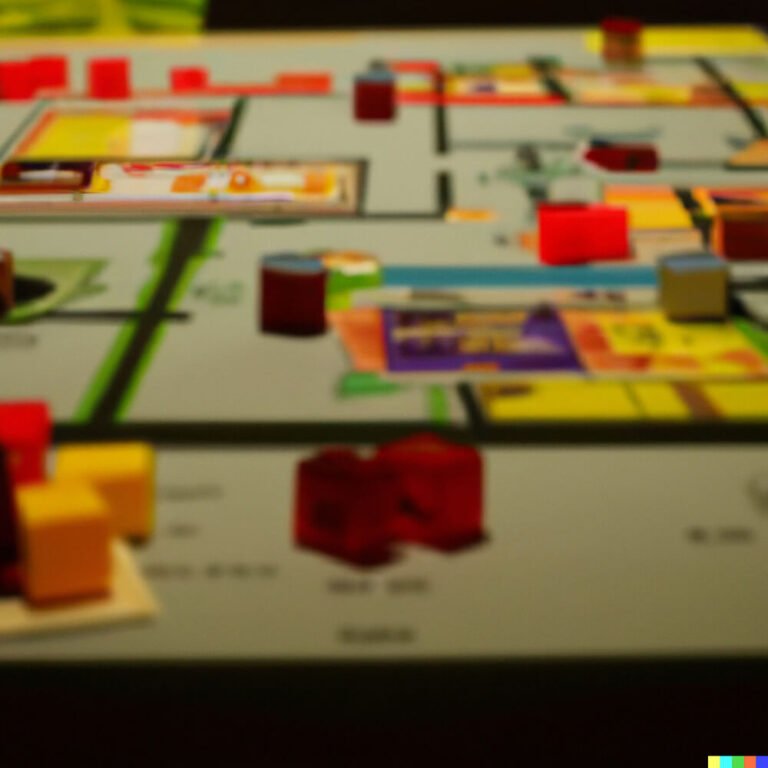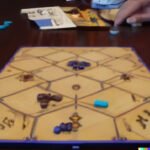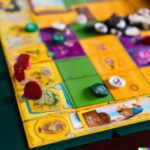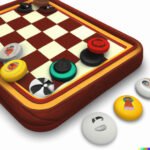Root is an asymmetric board game that has gained popularity for its complex and deep strategic gameplay. In this article, we will explore the world of Root Board Game strategy, from understanding the factions and key components to analyzing the game’s strategic depth and learning advanced tactics for each faction.
The game features different factions, each with its own unique abilities and playstyle, making it crucial to understand their strengths and weaknesses to develop a winning strategy. From the cunning Vagabond to the powerful Marquise de Cat, players must adapt their approach according to their chosen faction or opponents’ choices.
To excel in Root Board Game, it is essential to grasp the mechanics and key components that drive the gameplay forward. Understanding how movement, control of clearings, crafting items, and scoring victory points work will lay a solid foundation for developing effective strategies and making tactical decisions throughout the game. Let’s delve deeper into these elements in the following sections.
Understanding the Different Factions in Root Board Game
The Root board game, designed by Cole Wehrle and published by Leder Games, is an asymmetric strategy game that has gained popularity for its unique factions and depth of gameplay. Each faction in the game offers a different playstyle, abilities, and goals, making it essential for players to understand the differences between them to develop an effective strategy.
The factions in the Root board game include the Marquise de Cat (the Cats), the Eyrie Dynasties (the Birds), the Woodland Alliance, the Vagabond, and various expansion factions such as the Riverfolk Company and the Lizard Cult. Understanding the strengths and weaknesses of each faction is crucial for both playing as and playing against them.
To better understand the different factions in Root, here are some key points to consider:
- The Cats: Known for their strong military presence and ability to build infrastructure across the board.
- The Birds: This faction employs a programming mechanic to dictate their actions each turn; they must carefully manage their decree to avoid turmoil.
- The Woodland Alliance: A faction focused on spreading sympathy across the forest and gradually inciting uprisings against other players.
- The Vagabond: Operating solo with a focus on quest completion, item collection, trading with other players, and influencing battles between other factions.
Understanding these key mechanics for each faction is essential to developing a successful root board game strategy. Whether you’re playing as or against any given faction will heavily influence your strategic decisions throughout gameplay.
Key Components and Mechanics of Root Board Game
In the Root board game, players take on the roles of different factions vying for control of the woodland. Each faction has its own unique abilities and goals, making it essential to understand the key components and mechanics of the game in order to develop a winning strategy.
One of the core components of Root is the asymmetric gameplay. This means that each faction has its own set of rules and victory conditions. For example, the Marquise de Cat focuses on building and crafting, while the Woodland Alliance uses sympathy tokens to rally supporters. Understanding these differences is crucial for formulating a successful strategy.
Another important mechanic in Root is the use of clearings. Clearings are different areas on the game board where players can move their pieces, build structures, and battle opponents. Strategically positioning your pieces in clearings that align with your faction’s strengths is key to gaining an advantage over your opponents.
Furthermore, crafting items plays a significant role in Root. By gathering resources and using them to craft items, players can gain powerful abilities or score points. Crafting efficiently and strategically can make a big difference in a player’s success.
Understanding these key components and mechanics will lay a solid foundation for developing an effective Root board game strategy. Acknowledging each faction’s strengths and weaknesses, mastering movement within clearings, and optimizing crafting will all contribute to a competitive edge during gameplay.
| Component/Mechanic | Description |
|---|---|
| Asymmetric Gameplay | Each faction has its own rules and victory conditions. |
| Clearings | Areas on the game board where players can move pieces, build structures, and battle opponents. |
| Crafting | Gathering resources to craft items for powerful abilities or points. |
Analyzing the Strategic Depth of Root Board Game
Root Board Game Strategy aims to provide players with an in-depth look at the strategic elements of the popular board game. The game, designed by Cole Wehrle and published by Leder Games, is known for its asymmetrical gameplay and unique faction abilities. In this section, we will delve into the strategic depth of Root Board Game, exploring how players can make informed decisions and adapt their gameplay based on various factors.
One of the key aspects of Root Board Game strategy is understanding the different faction abilities and their interactions. Each faction has its own strengths, weaknesses, and playstyle, which significantly impacts the overall strategy. For example, the Marquise de Cat focuses on building and controlling territories, while the Eyrie Dynasties aim for a strong leader position to maintain control over their actions. Understanding these factions’ intricacies is crucial for devising successful strategies.
Another important factor in analyzing the strategic depth of Root Board Game is the game’s dynamic nature. As players interact with each other and adapt to changing circumstances, they must constantly reevaluate their strategies. This adaptability is a fundamental aspect of mastering Root Board Game strategy. Remaining flexible and being able to pivot when necessary can be the difference between victory and defeat.
Furthermore, mastering Root Board Game strategy requires a deep understanding of game dynamics such as resource management, area control, and timing. Players must carefully consider when to build specific structures or initiate pivotal actions to maximize their chances of success. By analyzing these strategic aspects closely, players can sharpen their decision-making skills and improve their overall performance in the game.
| Aspect | Description |
|---|---|
| Faction Abilities | Understanding each faction’s unique strengths and weaknesses |
| Adaptability | Being able to adjust strategies based on changing circumstances |
| Game Dynamics | Analysis of resource management, area control, and timing |
Tips and Tricks for Mastering the Root Board Game Strategy
Mastering the strategy of the Root Board Game requires a deep understanding of its key components and mechanics, as well as an ability to adapt and counter your opponents’ moves. In this section, we will provide you with some valuable tips and tricks to improve your gameplay and increase your chances of victory.
Familiarize Yourself With the Different Factions
Each faction in the Root Board Game has its own unique abilities, strengths, and weaknesses. To truly master the game, it’s essential to familiarize yourself with each faction’s playstyle and objectives. By understanding the capabilities of each faction, you can anticipate their moves and formulate effective strategies to outmaneuver them.
Focus on Balance and Control
One key element of a successful Root Board Game strategy is achieving a balance between expanding your influence on the board and maintaining control over key areas. It’s crucial to strategically spread your forces while also defending crucial clearings or strongholds. By doing so, you can prevent your opponents from gaining an upper hand while steadily advancing towards victory.
Adapt to Changing Circumstances
The Root Board Game is dynamic, with ever-changing alliances, battles, and shifting power dynamics. As such, it’s important to remain flexible in your approach and be prepared to adapt your strategy based on the actions of your opponents. Keeping a close eye on their movements and adjusting your plans accordingly will greatly increase your chances of success.
By incorporating these tips into your gameplay, you can elevate your Root Board Game strategy and become a formidable player capable of outwitting any opponent. With practice and dedication, mastering the game’s strategic depth will undoubtedly lead to more thrilling and rewarding gaming experiences.
Advanced Strategies for Each Faction in Root Board Game
Root Board Game is a highly immersive and competitive game that offers a unique experience for players. Each faction in the game has its own strengths, weaknesses, and playstyle, making it crucial to understand the advanced strategies specific to each faction. Whether you’re playing as the Marquise de Cat, the Eyrie Dynasties, the Woodland Alliance, or the Vagabond, mastering the intricacies of your chosen faction is essential for success in Root Board Game.
Here are some advanced strategies for each faction in Root Board Game:
- Marquise de Cat: As the Marquise de Cat, your primary focus should be on establishing a strong presence on the board through building clearings and crafting items. You should also prioritize controlling key territories and taking advantage of workshops to gain extra actions.
- Eyrie Dynasties: The Eyrie Dynasties rely on their decree system to make powerful moves. Focus on carefully planning and executing your decree orders to maximize your actions each turn. Additionally, pay close attention to managing your leader’s support and avoid falling into turmoil.
- Woodland Alliance: Playing as the Woodland Alliance requires a stealthy and tactical approach. Utilize sympathy tokens to build support among local populations while keeping a low profile to avoid drawing unwanted attention from other factions.
- Vagabond: The Vagabond excels at using their mobility and flexibility to achieve their objectives. Make use of ruins and clearings to recover items and build relationships with other factions for mutual gains.
By delving into these advanced strategies tailored specifically for each faction in Root Board Game, players can deepen their understanding of the game’s mechanics and immerse themselves more fully into this captivating world. It allows them to fine-tune their gameplay based on their chosen faction’s unique abilities and objectives while also adapting their tactics based on opponents’ moves.
How to Adapt and Counter Opponents’ Strategies in Root Board Game
Adapting to and countering opponents’ strategies is a crucial aspect of mastering the Root board game. With multiple factions and asymmetrical gameplay, it’s important to be able to pivot and adjust your strategies based on what your opponents are doing. This section will provide some key insights into how to adapt and counter opponents’ strategies effectively in the Root board game.
Understanding Your Opponents
One of the first steps in adapting and countering opponents’ strategies in the Root board game is understanding their faction’s strengths, weaknesses, and overall goals. By understanding what each faction is trying to achieve, you can anticipate their moves and work towards disrupting their plans. Additionally, pay attention to how your opponents are building their forces and which clearings they are focusing on, as this information can help guide your own strategic decisions.
Flexible Planning
In the Root board game, it’s important to have a flexible game plan that can adapt to the actions of your opponents. Instead of sticking rigidly to a predetermined strategy, try to have multiple paths towards victory and be willing to pivot if necessary. Keep an eye on the evolving board state and be prepared to change tactics if one approach is not working out as anticipated.
Countering Opponent Strategies
Once you have a good understanding of your opponent’s strategies, look for opportunities to directly disrupt their plans. This could involve targeting key areas on the board that they rely on or actively working to prevent them from achieving their objectives. At the same time, be mindful of potential retaliation from your opponents as you interfere with their plans.
By being flexible in your planning, understanding your opponent’s goals, and actively countering their strategies, you can become a more adaptable and skilled player in the Root board game. Remember that adaptation is key in this asymmetrical game where every faction has its own unique strengths and weaknesses. Keep honing your skills through practice and observation as you continue developing your strategic prowess in the Root board game.
Resources and References for Further Improving Your Root Board Game Strategy
In conclusion, Root Board Game offers a rich and immersive gaming experience with its various factions, complex mechanics, and deep strategic elements. Understanding the different factions and their unique abilities is crucial in mastering the game, as each faction requires a different approach to achieve victory. The key components and mechanics of the game provide a solid foundation for players to develop their strategies, while also offering flexibility and adaptability to counter opponents’ moves.
Mastering Root Board Game strategy requires diligent study and practice, as well as an understanding of the game’s strategic depth. By analyzing the strengths and weaknesses of each faction, players can develop effective tactics to outmaneuver their opponents. Utilizing tips and tricks for mastering the game’s strategy is essential for improving gameplay, while advanced strategies tailored to each faction can give players a competitive edge.
To further improve your Root Board Game strategy, there are various resources and references available, such as online forums, strategy guides, tutorials, and gameplay videos. These resources offer valuable insights and perspectives from experienced players, allowing you to broaden your understanding of the game and discover new tactics. Ultimately, by continuously adapting and refining your strategies based on these resources, you can enhance your skills and enjoy even more thrilling victories in Root Board Game.
Frequently Asked Questions
How Do You Win at Root?
Winning at Root involves understanding the unique abilities and asymmetrical nature of each faction, as well as effectively managing resources, crafting a tailored strategy, and adapting to the ever-changing dynamics of the game board. Players must also be able to navigate player interactions and politics to secure victory.
Is Root a Strategy Game?
Root is indeed a strategy game, characterized by its deep complexity, asymmetric factions, and multi-layered gameplay mechanics. Players are required to think critically and plan ahead, analyzing different paths to victory while considering rival factions’ strengths and weaknesses.
Is Root a Hard Board Game?
Root can be considered a hard board game due to its intricate gameplay systems, asymmetrical faction abilities, and high level of strategic depth. Mastering the game requires players to invest time in learning each faction’s intricacies and understanding how they interact within the dynamic ecosystem of the game.
The learning curve may prove challenging for some players new to complex board games.

I love playing all kinds of games – from classics like Monopoly to modern favourites like Ticket to Ride.
I created this blog as a way to share my love of board games with others, and provide information on the latest releases and news in the industry.





